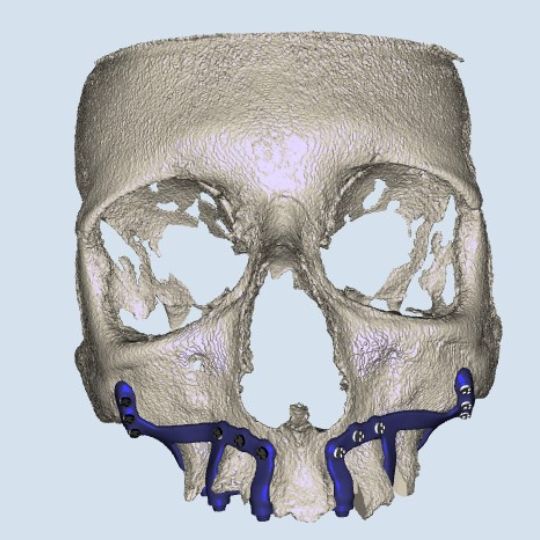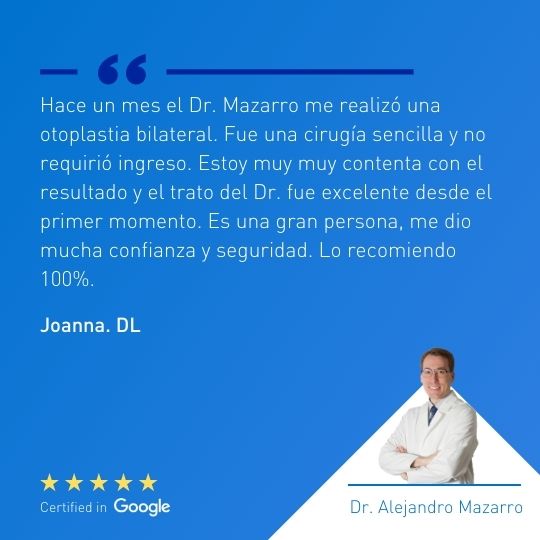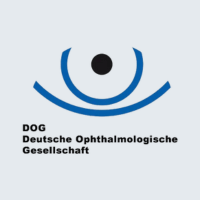Looking for a solution for bone atrophy?
Subperiosteal dental implants represent a revolutionary solution for patients without enough bone for conventional implants. Fully custom-designed, they are an excellent option for patients with bone atrophy who want to regain a fixed denture in a short period of time and without the need for lengthy bone grafting surgeries. Consulting with a dental professional is the first step in determining whether subperiosteal implants are the best option for you.
At Turo Park Clinics, we are committed to offering the most advanced and effective dental solutions. Our team of experts is here to guide you through every step of the process, ensuring you get the best possible results. Contact us today for more information and to schedule your consultation!
Treatment information
| Duration of surgery | Approx. 1-2 hours |
|---|---|
| Recovery | 2-3 weeks |
| Results | Immediate |
| Effects | Immediate after recovery |
| Hospitalisation | Not necessary, outpatient procedure |
| Anaesthesia | Local anaesthesia, in some cases conscious sedation |
| Price | Low budget |
Fast track your treatment
To book an appointment or speak with one of our friendly team, please get in touch using the options below

What are Subperiosteal Dental Implants?
Subperiosteal dental implants, also known as juxtaosseous, are an advanced alternative for patients who cannot use conventional implants or who wish to avoid undergoing aggressive surgeries such as zygomatic implants or bone grafts (which require up to 1 year for consolidation). Based on CAD-CAM technology, which allows them to be designed in a completely personalised way, they consist of a titanium structure that rests on the bone of the maxilla or mandible, so they adapt perfectly to the patient's bone structure.
Benefits of Periosteal Implants
Subperiosteal periosteal implants offer numerous benefits. They are ideal for patients with insufficient bone mass who cannot undergo rehabilitation with conventional implants. In addition, they are much less invasive than their main alternative (zygomatic implants) and allow a fixed prosthesis to be placed on the same day of surgery (unlike bone grafting surgeries, where the average waiting time is 1 year). Moreover, the recovery time is much shorter compared to traditional methods and also reduces the risk of rejection, as it adapts perfectly to the patient's anatomy.
The design of subperiosteal implants is based on a fundamental first step, which consists of a detailed study of the case. This study is carried out by a specialised team made up of a dentist and a maxillofacial surgeon, who will analyse your case by taking intraoral records and a high-definition scanner. These records are used to create a virtual replica on which to design the titanium structure that will adapt with extreme precision to the contours of the bone. A provisional fixed prosthesis adapted to your needs is also designed at this stage.
Once both the implant and the provisional prosthesis have been designed, we will schedule the surgery, which is performed on an outpatient basis and, for your greater comfort, under intravenous sedation. As it is custom-made, the subperiosteal implant is placed in a minimally invasive procedure, being completely covered by gum except for the connections to which the temporary prosthesis will be attached. As in any oral surgery, a certain degree of inflammation is usual, and it will be sufficient to follow an antibiotic and anti-inflammatory regimen for the first few days.
The care of subperiosteal implants is similar to that of natural teeth. It is crucial to maintain good oral hygiene, brushing after every meal and regular check-ups with your dentist. This ensures the longevity of the implant and prevents possible complications.
Restoration of Dental Functionality and Aesthetics
Subperiosteal periosteal dental implants not only offer a long-lasting solution for tooth loss, but also restore dental function and aesthetics. By replacing missing teeth, patients regain their ability to chew and speak normally, which positively impacts their nutrition and overall well-being. In addition, these implants are designed to integrate seamlessly with natural teeth, improving the appearance of the smile and increasing patient confidence.
Improved Quality of Life
Restoration of dental function with subperiosteal implants contributes significantly to improved quality of life. Patients experience greater comfort and stability when eating, eliminating the dietary limitations that can accompany traditional dentures. In addition, the aesthetic improvement offers a boost to self-esteem, allowing patients to smile and communicate with greater confidence. Together, these benefits contribute to a more active and healthy life, both physically and emotionally.
Periosteal Implant Surgery Steps

Step 1: Initial Assessment
A consultation is carried out to assess the patient's oral health and determine the feasibility of the treatment. Once assessed and approved, treatment begins.

Step 2: Impressions and X-rays
Impressions are taken for 3D modelling using our intraoral scanner and a high definition scanner to create a virtual model for treatment planning.

Step 3: Fabrication of the Implant
Using the 3D model, a customised implant is designed and manufactured to fit the patient's bone structure.

Step 4: Surgical Preparation
As in any surgery, a preoperative study is carried out, including a blood test and electrocardiogram.

Step 5: Implant placement
The implant is carefully placed on the bone under the gum tissue in an outpatient surgery under intravenous sedation. For your convenience, the sutures used are absorbable, so there is no need to remove them.

Step 6: Recovery and Follow-up
A postoperative care plan is provided and follow-up visits are scheduled to monitor implant integration.
Ideal Candidates for Periosteal Implants
Subperiosteal implants are especially indicated for patients suffering from severe bone atrophy that prevents the placement of conventional implants. In these cases, the alternatives that existed to date included:
- Removable complete prosthesis: this is the classic "removable" prosthesis that covers the entire palate and requires glue to attach it to the gum.
- Bone grafting and subsequent placement of conventional implants: certain cases of atrophy can be treated by placing block bone grafts (jaw or hip) or particulate bone grafts (sinus lift). In these cases, the bone integration process takes about 1 year, after which (if everything has gone well) conventional implants are placed.
- Zygomatic implants: these are implants that are anchored in the cheekbones, requiring aggressive surgery for their placement due to their dimensions.

Unlike these techniques, subperiosteal implants offer a fixed solution from day one, without the need for aggressive surgery and with the benefits of a fully computer-aided design of the procedure.
Technological Advances in Periosteal Implants
Technological advances have enabled the development of subperiosteal implants, ushering in a new era in modern implantology. Using 3D imaging techniques and computer aided design (CAD) software we are able to create implants that precisely fit the patient's bone structure. At Turó Park Clinics we have a team that has pioneered this technique and is among those who have placed the most subperiosteal implants nationwide.
Our subperiosteal or juxtaosseous dental implants specialists


Reviews of our doctors


Our answers to the most frequently asked questions about periosteal implants
What are periosteal implants?
Who is a candidate for subperiosteal implants?
How long does the procedure take?
Does the placement of periosteal implants hurt?
How long do periosteal implants last?
How are periosteal implants maintained?
Universities, medical societies and organisations










Take a look at the financing options
Don't worry, we take care of everything!